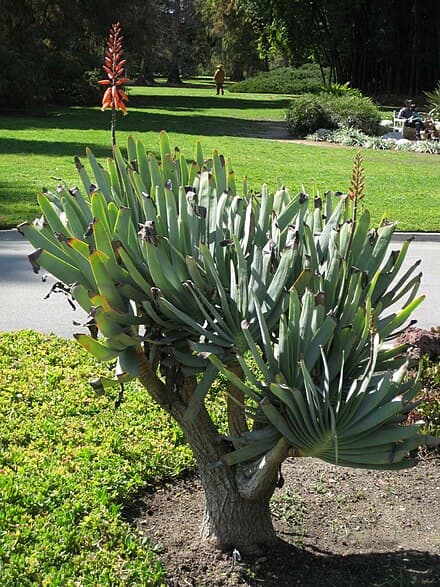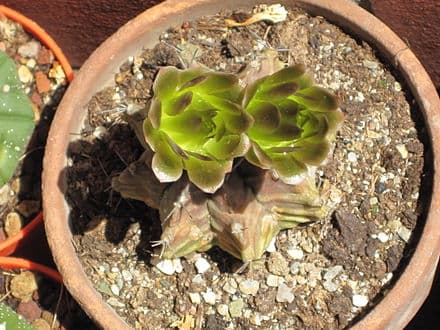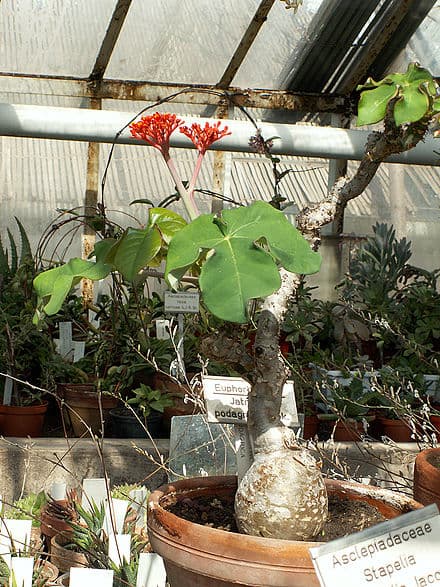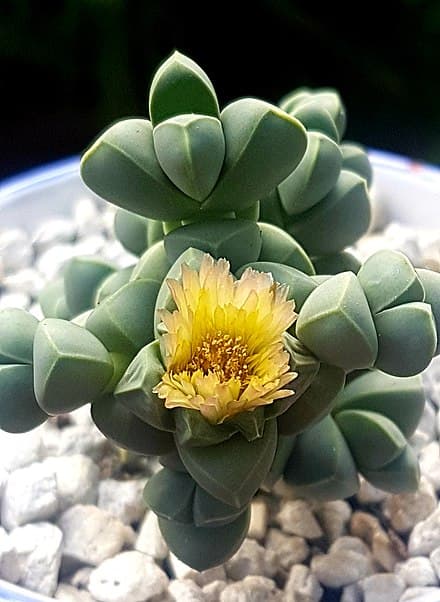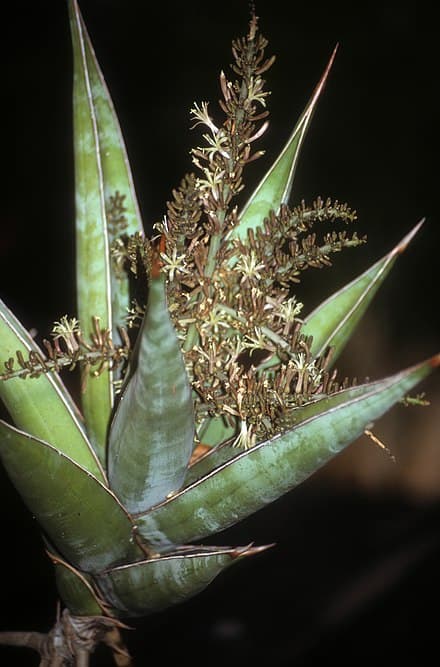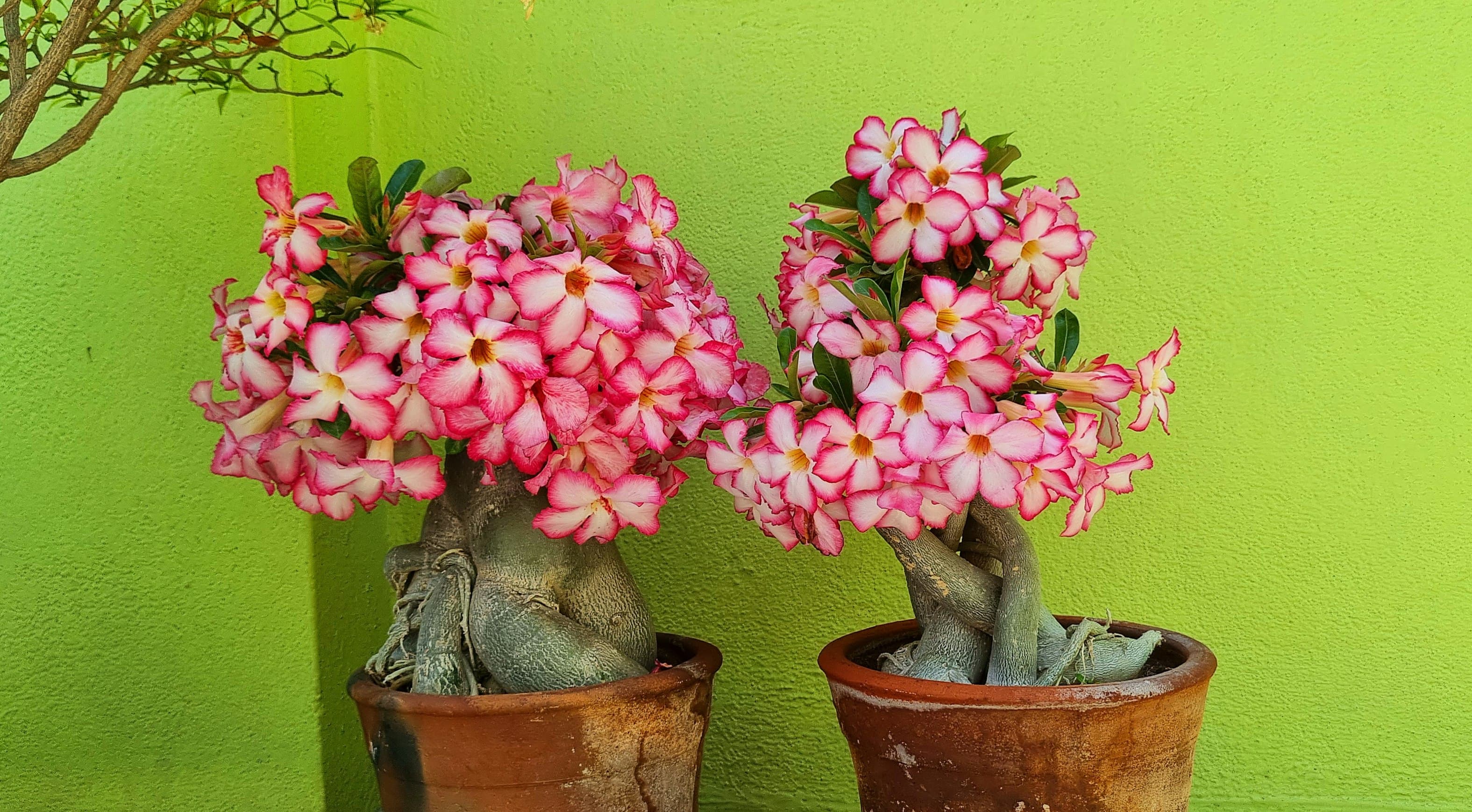
Adenium obesum image • Photo: Author Supratik Deshmukh• CC BY-SA 4.0
Adenium obesum is an evergreen or drought-deciduous succulent shrub with thick, swollen stems and a prominent basal caudex that protrudes from the soil. It grows 0.12-5 meters tall with leathery, spirally arranged leaves clustered at branch tips (5-15 cm long). The plant produces striking tubular flowers (2-5 cm long) with five petals in red and pink hues, often featuring a whitish blush near the throat. Notable for its bonsai potential and poisonous milky sap containing cardiac glycosides, it thrives in arid conditions and displays remarkable drought tolerance.
Plant Care Overview
Care Guide
Essential requirements for your Adenium obesum
Light Requirements
Full sun
Light conditions can affect leaf color and growth rate. Adjust placement as needed based on your plant's response.
Watering Schedule
Infrequent (xeric watering similar to cacti)
Humidity Needs
low humidity
Always check soil moisture before watering. Adjust frequency based on your home's conditions.
Temperature Range
10-30°C (minimum 10°C/50°F in winter)
Native Climate
Native to Sahel regions south of the Sahara, Eastern and Southern Africa, Arabian Peninsula
Keep away from drafts, heaters, and air conditioners which can stress your plant.
Soil Type
Well-draining sandy or cactus mix with good aeration
Fertilizer
Balanced houseplant fertilizer during growing season
Consider repotting every 1-2 years to refresh soil nutrients and accommodate growth.
Propagation
Methods to grow more Adenium obesum plants
Seed propagation, stem cuttings, grafting, and tissue culture
Plant Info
Characteristics and background information
Sahel regions south of the Sahara, Eastern and Southern Africa, Arabian Peninsula
slow
0.12-5 m (0.39-16.40 ft) depending on subspecies and growing conditions
Perennial
Toxic to pets
Indoor Blooming
This plant can produce flowers indoors when given proper care.
Bloom Season
Year-round in warm climates, seasonal in temperate zones
Flower Description
Tubular 2-5 cm flowers with 4-6 cm wide petal spread, typically red or pink with whitish throat blush, resembling plumeria blossoms
Fun Fact
The plant's toxic sap has been traditionally used as arrow poison for hunting large game in Africa
Troubleshooting
Solutions for typical issues with your Adenium obesum
Caterpillars feeding on leaves and stems, visible chewing damage
Yellowing leaves, soft caudex, foul-smelling roots
Sudden loss of leaves during cold spells or drought stress
Varieties
Different varieties of Adenium obesum
Native to Socotra island, features massive swollen base up to 2.5m diameter
Compact form from Saudi Arabia and Yemen with distinctive trunk shape
Largest African variety reaching 5m height
Community Tips
Advice shared by other plant enthusiasts
No tips shared yet. Be the first to share your experience!
(Coming soon)
Care Guides
Detailed guides for caring for your Adenium obesum
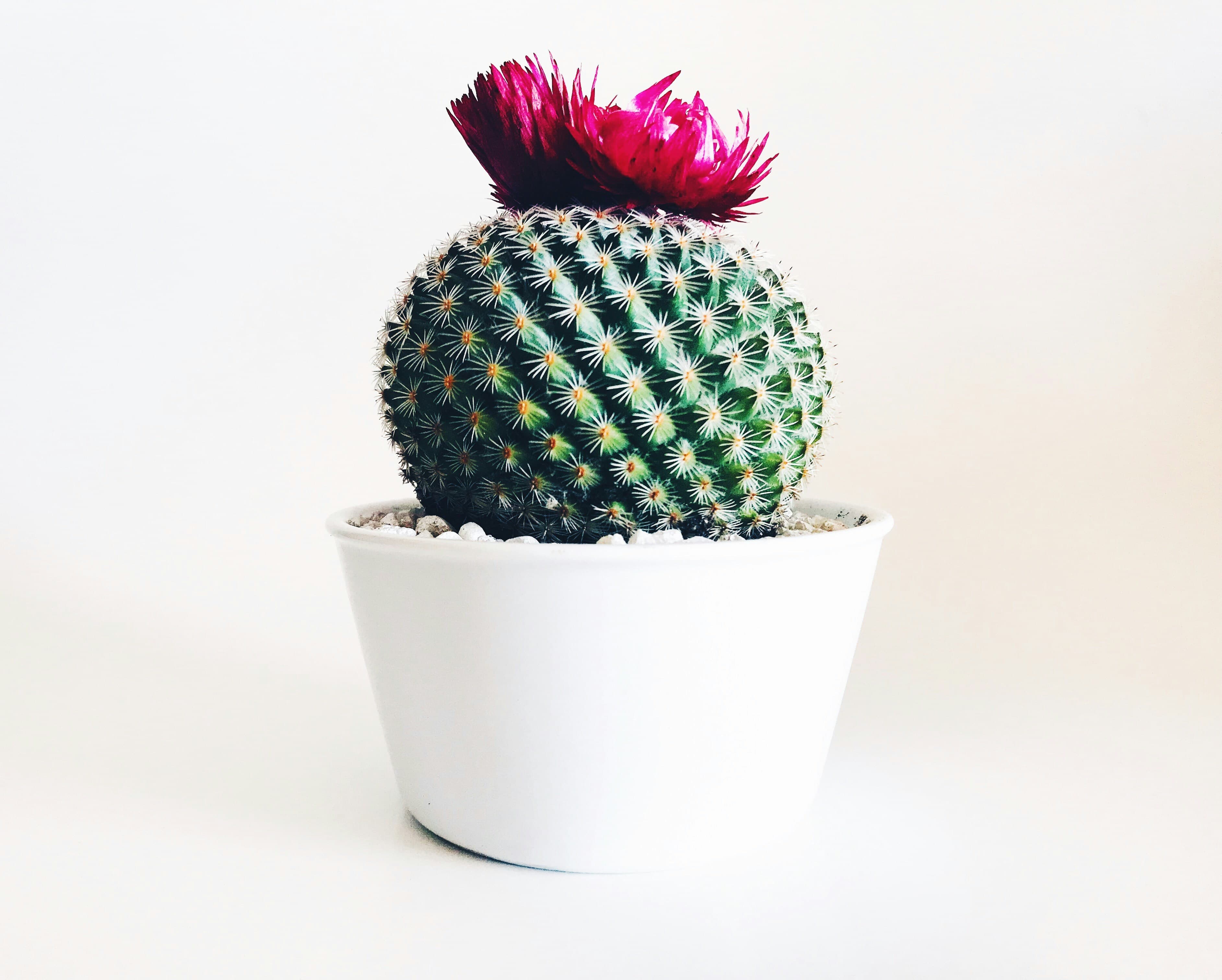
Drought Tolerant Plants Care Guide
Learn how to care for drought tolerant plants like your Adenium obesum
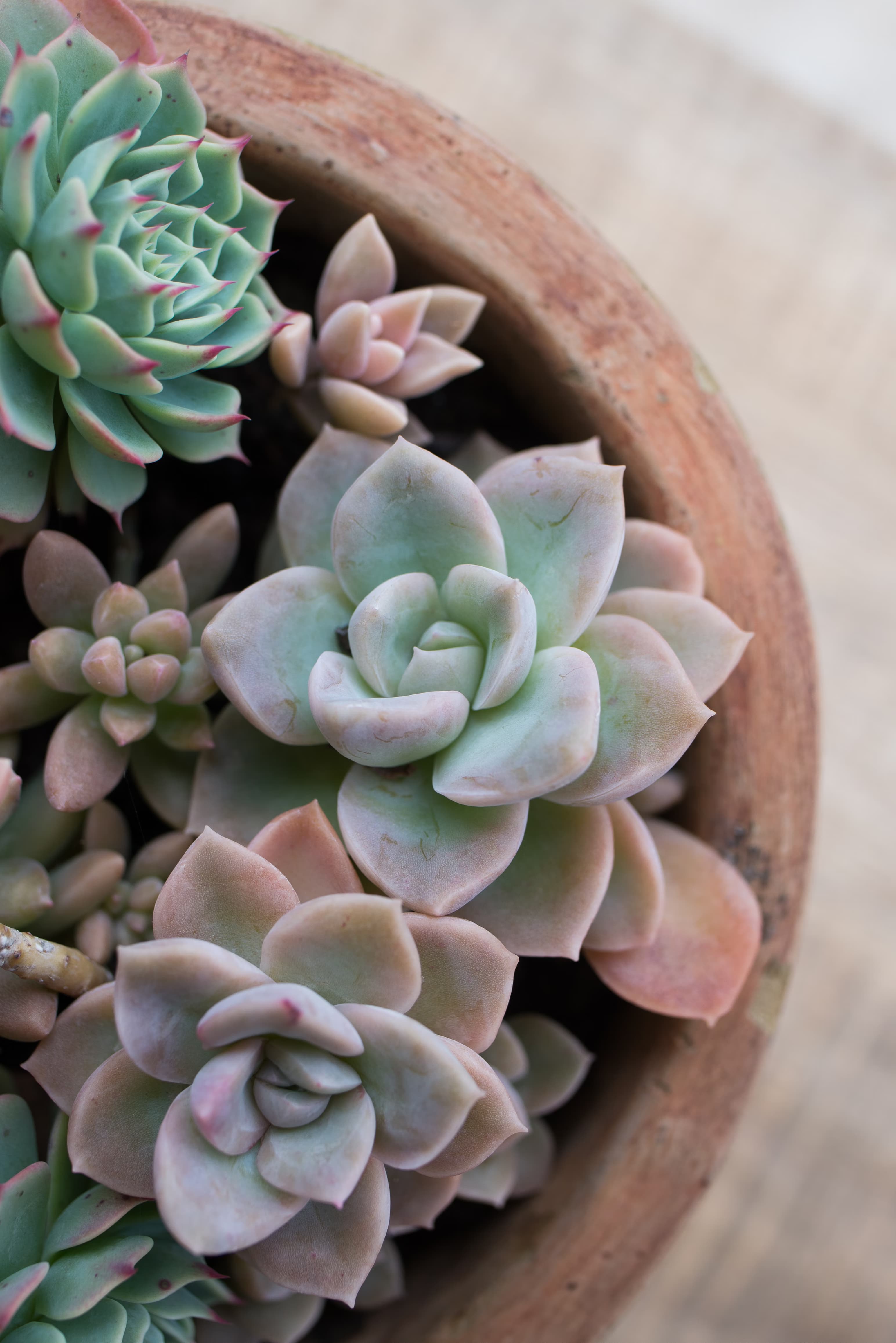
Succulents & Cacti Plants Care Guide
Learn how to care for succulents & cacti plants like your Adenium obesum
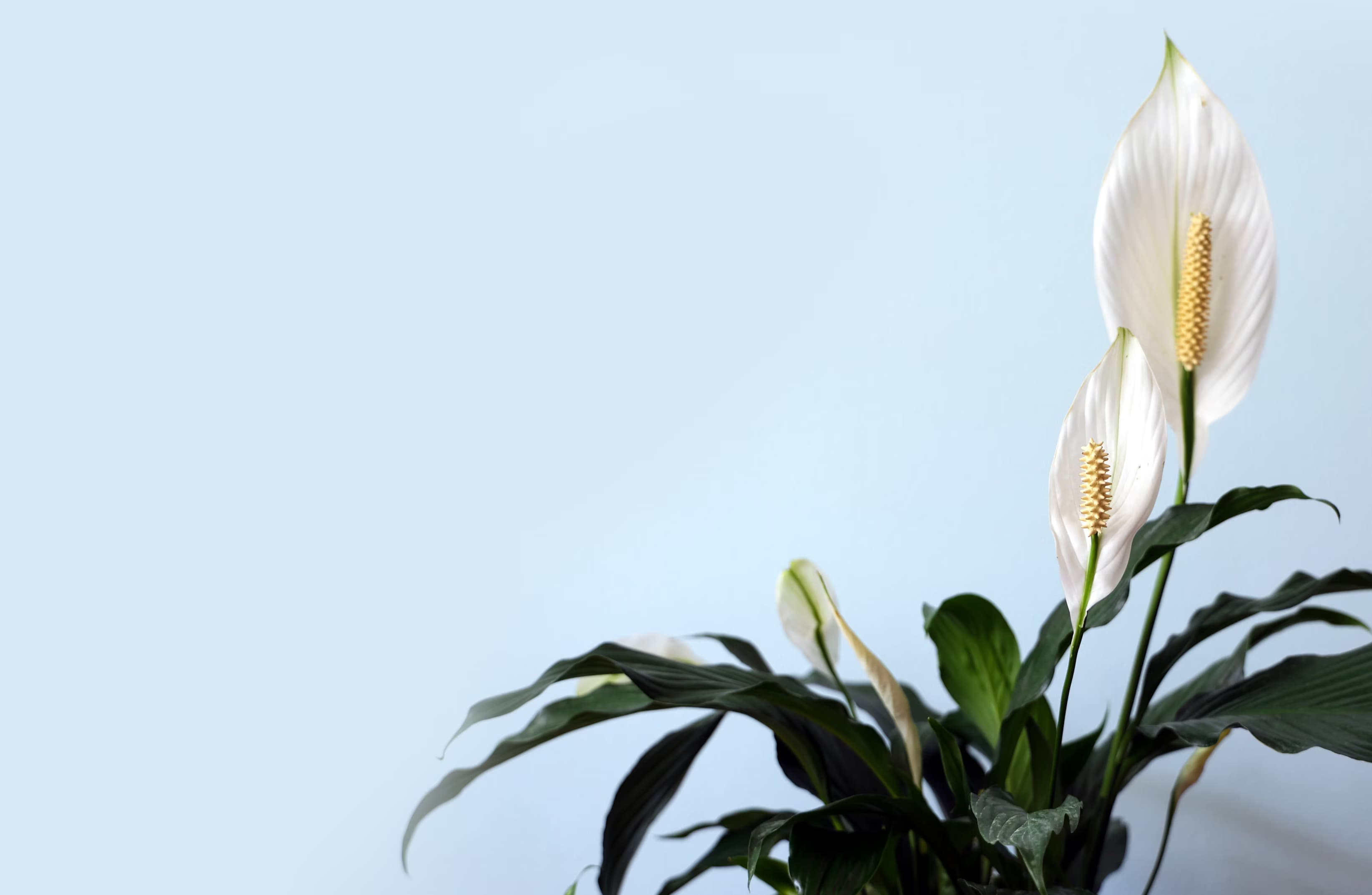
Flowering Plants Plants Care Guide
Learn how to care for flowering plants plants like your Adenium obesum
Related Plants
Similar plants that might interest you
Nurseries Near You
Find Local Nurseries That Carry Adenium obesum
We're building a database of local nurseries to help you find where to buy this plant near you. You'll be able to see store hours, contact information, and even check inventory.
